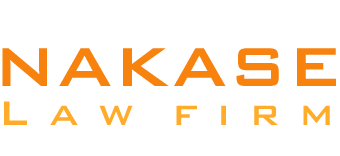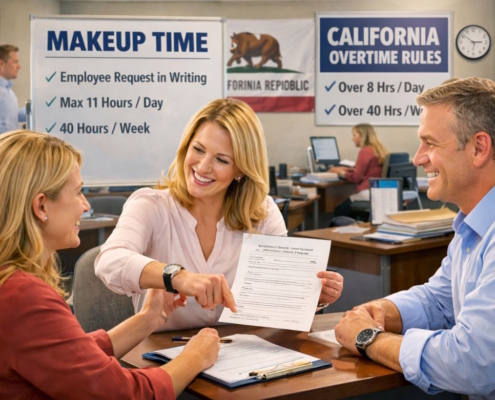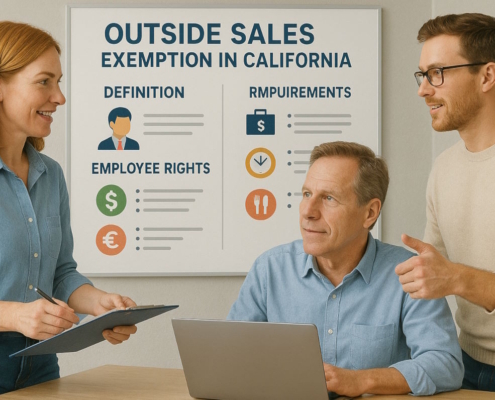Introduction
The DLSE-NTE requirement stems from the Wage Theft Protection Act (Bill 469), which was signed into law by Governor Brown on 9th October 2011, and it goes into effect on 1st January 2012. It mandates that companies give all new hires specific notices, such as their pay rates, their employer’s name and address, and their compensation carrier. This is formalized in Labor Code Section 2810.5 and fulfilled via the DLSE-NTE form.
In order to meet the requirements of the amended Labor Code Section 2810.5, the law specifically instructed the California Labor Commissioner to create and publish a DLSE-NTE template form. The eagerly awaited template was released by the Division of Labor Standards Enforcement on 29th December 2011. The DLSE published frequently asked questions regarding the updated notice one day later.
Employers have a number of concerns about the DLSE-NTE template, which is accessible on the Department of Industrial Relations’ website in both PDF and Word forms. According to Labor Code Section 2810.5, the employer is required to give every worker a written notification at the time of employment. Employers using the DLSE-NTE form must disclose:
- The employee’s pay rate and the basis for it (such as hourly, commission, or salary), along with any relevant overtime rates;
- The standard salary that the employer specifies;
- Employer’s address, name, and phone number, including any of the “doing business as” names that the company may have used;
- The company’s workers’ compensation insurance provider’s address, name, and phone number; and
- Any additional data that the Labor Commissioner determines is “material and required.”
Unless the modifications are entirely represented on a timely, detailed wage statement or in a different record, written notice of any modifications to any of the aforementioned information must be supplied within 7 calendar days of the change. Employees of the state and municipal governments, those exempt from overtime compensation under the laws of California, and those protected by specific labor contracts are all excluded from Section 2810.5.
As previously mentioned, the Labor Commissioner “must produce a template that conforms” with the amended Labor Code Section 2810.5. In anticipation of the law’s implementation, employers believed the DLSE would release the template more than a few days in advance.
As the effective date of January 1 approached, many employers created their own notice forms. These forms may now need to be updated to include new data that the DLSE appended to the initial data that the Act requested.
Issues with the DLSE Template
To what some may consider an intrusive degree, the recently passed law explicitly allows the DLSE to add additional mandatory information that is considered “material & necessary” on the set of eight criteria that are directly covered by the statute. The DLSE-NTE form asks employers to provide their names, addresses (physical & mailing), and whether they are a corporation, general partnership, limited liability company, sole proprietor, staffing agency (e.g., PEO or temp agency), as well as any other names they may use for their business.
Two sections of the DLSE-NTE form must be filled out, one for the onsite employer and another for the other business, if the onsite employer utilizes any other company or organization to hire workers or manage wages and benefits. If the only additional business is a payroll processing or recruiting service, then neither item needs to be filled out. Full address of the primary location, mailing address, phone number, and other names are required, along with details about “the additional business” such as whether it is a temporary labor agency, employee leasing business, or PEO (professional employer organization).
Employers may face difficulties in determining which party will be in charge of providing notice and cooperating to make the required information available. It might not always be easy to describe the relationships using the DLSE categories.
There are also issues with the overtime rate format provided by the DLSE. In terms of compensation, overtime can be one and a half times the usual rate or twice the “regular rate.” Because it could contain commissions and bonuses and fluctuate from payment period to payment period, the “regular rate” might not be easily calculated.
In the field of workers’ compensation coverage, the DLSE likewise broadened the scope of its template outside the words of Labor Code 2810.5. The DLSE is not satisfied with the insurance carrier’s identity; in order to obtain permission to self-insure, it needs the insurance carrier’s address, telephone number, name, policy number, or, in the case of self-insured, certificate number. Concerns have been raised by companies whose workers’ compensation coverage systems use a third-party admin, that workers should seek assistance with a claim from the third-party admin rather than the insurance company.
How to correctly “tick the box” on the DLSE, indicating whether the contract of employment is oral or written, is perhaps the most confusing and worrisome option. The majority of employment contracts combine written and spoken elements in a complicated way. One of the main issues is making sure that the 2810.5 notice doesn’t undermine at-will jobs, which are frequently included in a written contract.
“This notification is a written contract on rates of pay, and affirms that either you or the business may terminate the relationship of employment at any moment, with or without cause or notice,” is one way to change the DLSE-NTE form to indicate that the notification is a written arrangement governing wage details. If appropriate, it should also include an at-will reminder.
Some answers are provided in the FAQs
The DLSE’s FAQs offer some direction despite the problems with the form structure, including:
- Employers are permitted to use their personal notices, provided that they provide all necessary details.
- As they are finished, non-English templates in Spanish, Korean, Vietnamese, Chinese, and Tagalog will be accessible on DLSE’s website.
- Although the DLSE believes that the notification mandated by Labor Code 2810.5 is required on its own form, it may be supplied along with other papers that are handed over at the point of hire. According to DLSE, workers shouldn’t have to combine information from multiple publications or manual pages.
- Although the notice can be sent electronically, the system must provide a receipt acknowledgment.
- The note merely indicates receipt, and an employee may decline to sign it. If an employee declines to sign, there should be proof of delivery.
- When there are several wage rates (such as shift differentials or different piece rates), the employer must list each of them on the notice.
Despite the useful FAQ, there are still questions. While ensuring that all necessary information is given to employees in compliance with the statute, employers ought to carefully decide whether they should utilize the DLSE-NTE format or alter and customize it.
Customize
In the field of employment law, a “universal approach” is rarely effective. The DLSE’s template notification and Section 2810.5 bring up a number of special concerns that require careful thought. For tailored guidance on how to effectively adhere to Labor Code Section 2810.5, employers should think about getting in touch with labor law counsel.































